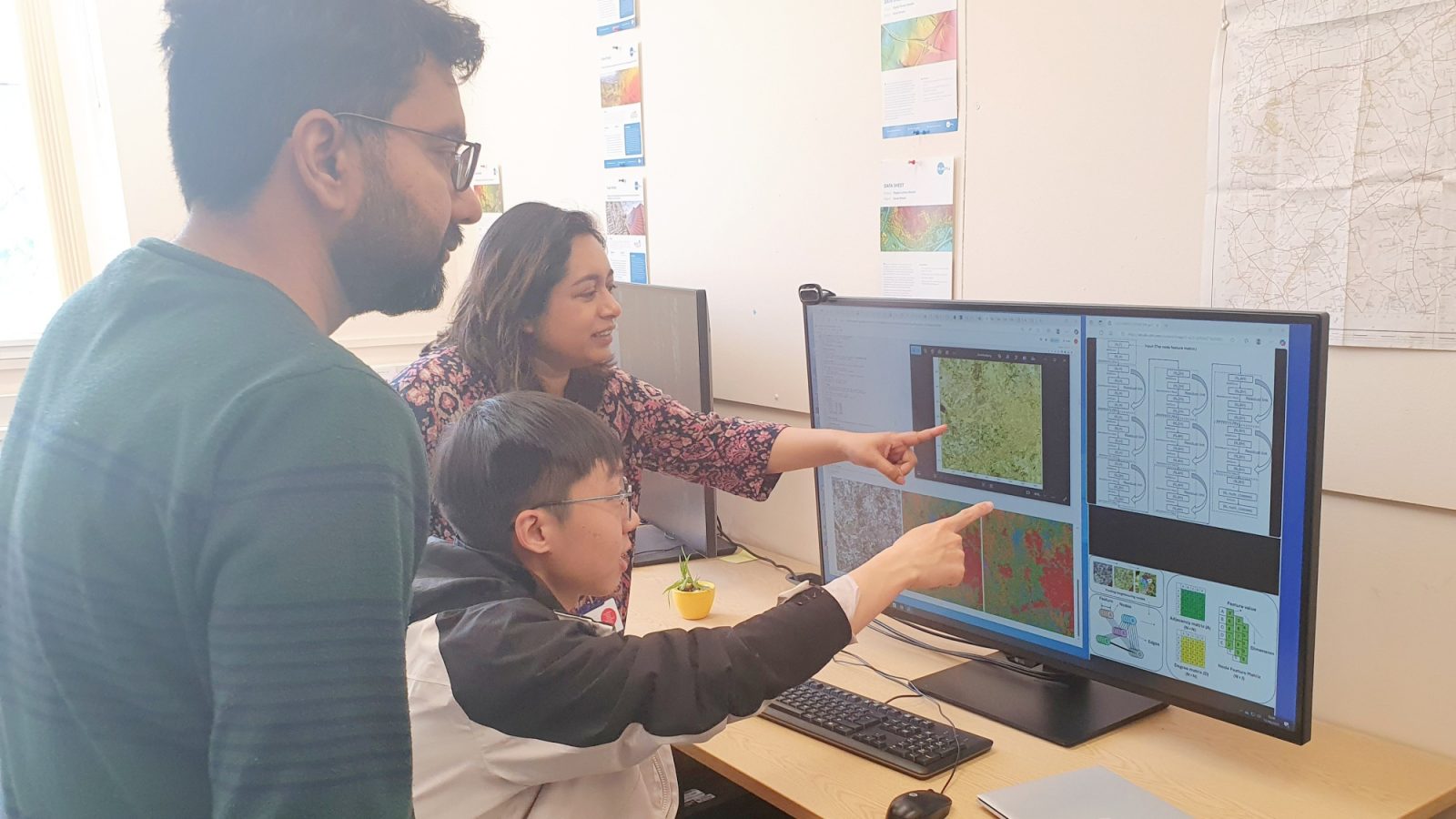A research team led by the University of Aberdeen has developed a pioneering AI model to improve accuracy and reduce computational time in land cover mapping, particularly for vegetation.
Detailed understanding of land cover, topographical features, and how land is used is central to tackling climate change impacts, food security, and sustainability.
Traditional vegetation mapping methods analyse satellite images pixel by pixel, which can be inefficient and prone to error - especially in diverse or complex terrains.
The new model developed by the research team, SAGRNet (Sampling and Attention-based Graph Convolutional Residual Network), uses advanced deep learning techniques to classify vegetation types with greater speed and accuracy. It can analyse entire landscape objects - such as fields and forests - providing better understanding of the shape, context, and relationships within the landscape, leading to more reliable and scalable mapping.
The study is published in the ISPRS Journal of Photogrammetry and Remote Sensing, the official journal of International Society for Photogrammetry and Remote Sensing.
SAGRNet was developed using satellite images covering the diverse landscape of north-east Scotland to sufficiently facilitate result validation.
The study focuses on areas comprising woodlands, farmlands, and grasslands situated adjacent to other landcover classes such as built-up areas and water, located in and around Aberdeen, Dundee, and the Highlands.
To further evaluate the generalisation capability of the proposed SAGRNet model, the team conducted additional experiments across five globally distributed urban fringe areas: Guangzhou (China), Durban (South Africa), Sydney (Australia), New York City (United States), and Porto Alegre (Brazil). These areas were carefully selected to represent diverse ecological backgrounds, vegetation structures, urbanisation intensities, and land cover complexities, providing a robust basis for assessing the transferability of the model.

SAGRNet, which has been made openly available, could help decision-makers to quickly visualise and understand the impact of major events such as floods, forest fires, drought or heavy rainfall on large areas of land as well as the crops they produce.
Project lead Dr Lydia Sam, Lecturer in Geosciences at the University of Aberdeen, said: “Accurate dimensional and topographic information on arable land is the foundation for further developing sustainable land management strategies. We have a multitude of earth observation satellites in orbit today providing images of our planet at very high resolutions. Models like SAGRNet provide a comprehensive vegetation mapping and characterisation framework, allowing users to unlock the true potential of their imagery data.
“Our system of deep learning algorithms can immediately and accurately recognise the different types of land cover, vegetation or crops in an area.
“This method addresses the inefficiencies of current systems by improving accuracy and reducing computational time, which is critical in responding to global challenges like climate change, deforestation, and food scarcity.”
Dr Anshuman Bhardwaj, Senior Lecturer in Geosciences at the University and co-lead of the project, added: “Our model is quite transferrable and can even provide rapid and accurate answers to questions about how the landscape has changed.
“This is vital for further understanding the impact of climate change from coastal erosions and landslips to shifts in plant or crop distribution.
“It can also be used to monitor crop growth to facilitate more accurate harvest predictions or to look at how crops grown in a particular area have changed over time and to make better informed decisions of the sustainability of land use.
“Our study lays a solid foundation for real-world applications in land monitoring, agriculture, and environmental management.”
PhD student and research assistant on the project Baoling Gui added: “SAGRNet is suitable for integration into large-scale applications such as land resource surveys, ecological monitoring platforms, national land cover mapping programs, and environmental change analysis frameworks.”
The project was funded by the BBSRC International Institutional Award scheme, in which the Aberdeen team worked in collaboration with international partners including Dr Diego Soto Gómez, University of Burgos (Spain), Dr Félix González Peñaloza, Evenor-Tech (Spain) and Professor Manfred F. Buchroithner, Technische Universität Dresden (Germany). Dr. David R. Green, Reader in Geosciences at the University of Aberdeen was also involved in the development of the published research article.